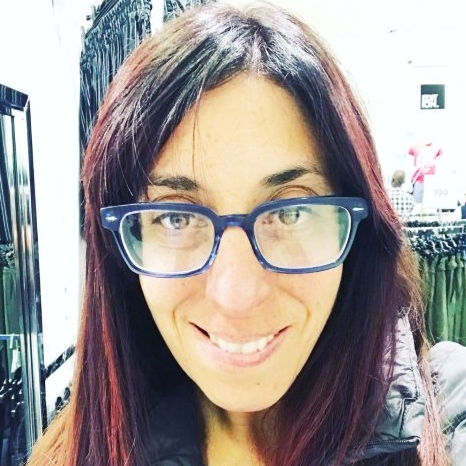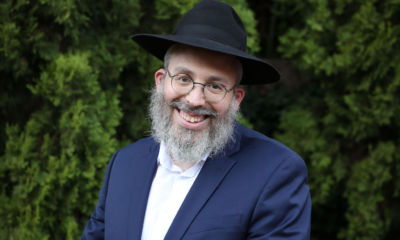
Parshot/Festivals

Looking devastation squarely in the eye
Published
3 years agoon
By
Adina Roth“How can we be brave enough not to look away?” These were the words that writer and thought leader Beth Amato asked on Facebook after yet another tragic loss was announced in the midst of this savage third wave.
With all the suffering, the growing despair, the loss of so much life, and the poverty, she was asking about our courage to bear it all, to “see” what’s happening. At times, the immense losses and despair feel like too much. And yet, as humans, how dare we turn away from the horror we see unfolding?
In the fifth chapter of Tractate Gittin in the Babylonian Talmud, we find a number of aggadata (stories) which recount the destruction of Jerusalem, Betar, and the Temple. Indeed, the rabbis wrote searing accounts of that time. They had the courage “not to look away”. Yet, the stories aren’t only about the rivers that run red with the blood of the Jewish people, the devastation is also described in terms of the loss of daily rites of passage, the blows dealt to communal life.
In one story, we are told that when a Jewish bride and groom would walk towards their chuppah, it was customary for a rooster and a hen to be included in the procession as a positive omen for procreation. One time, a Roman troop came upon a Jewish wedding procession, and stole the fowl pair. Enraged, the Jewish community attacked the troop of Romans, provoking the Roman emperor to bring an onslaught on the Jewish people.
A further story recounts that trees were planted upon the birth of every Jewish boy and girl. When they got married, boughs from these trees would be intertwined to build the chuppah, symbolic of the bride and groom’s intertwinement. One time, the emperor’s daughter was passing by a grove of these trees when her carriage broke. Her soldiers hacked down one of the trees in order to replace the shaft. The Jewish people were so angered, they attacked the daughter’s attendants, leading the emperor to attack Betar.
If the Ninth of Av is linked in our minds to the destruction of the Temple, here we read that it’s also about desecration of the precious traditions that enriched the daily lives of the Jewish people – chickens and roosters at a wedding, cedar and cypress trees at births.
It’s hard to quantify loss in a pandemic. On one level, if we are alive and healthy, we might whisper dayeinu, and thank G-d for our fundamental existence. Yet, as these stories teach us, life is made up of more than mere survival.
During this pandemic, we have been robbed of the experience of living on all levels: weddings and B’neimitzvah are postponed, a simple birthday which a child anticipates all year around is celebrated on Zoom, we are denied our usual rites to comfort the mourner, and our Jewish holidays are celebrated alone.
As with these aggadata, we can affirm that the loss of a tree or a rooster, a school play, or a long-anticipated birthday party are part of this suffering and part of this story.
As we move into the heart of these stories of killing and destruction, the rabbis recall how in an act of deep perversity, Romans compelled Jewish children to watch while they engaged in sexual relations. Again, the horror feels too much to witness.
Yet, we read of a story where two children who are forced to watch this degradation open their mouths and speak. Their response is surprising, they turn to text. One of them says to the other, “Where is this terribleness written in our Torah?” The pathos of the question is felt keenly. The child is both protesting this suffering and seeking to draw some meaning from it. The other child responds, “It is written about in Devarim.” The first child then responds, “Why haven’t I reached that sentence yet?”, to which the second child responds, “You are one and a half pages away.” The first child then responds, “I’m glad I haven’t reached it yet because had I reached it, I wouldn’t have needed you to answer the question.”
At the pinnacle of their despair and humiliation, these children turn to the ageless Jewish practice of Torah learning and chavruta (friendship). The first child asks a quintessentially Jewish question about meaning-making: “Where is this written?” The Romans incorporate the Jewish children in a perverse sexual relationship, enacting the very antithesis of connection and ethical relatedness.
Yet, in the midst of that evil, the two children remember the perennial Jewish practice of meaning-making through text and chevruta. Theirs is a profound form of protest and hope in the middle of despair.
Wherever we are, we have the capacity for consciousness and connection. I like to imagine that as the rabbis recounted this story, they too felt a shift. They were “seeing” the devastation of this time with unflinching courage. And at this moment, like the children, they recalled that as humans, we can seek meaning, as humans we have each other. Even now, all isn’t lost.
What these stories seem to teach is that the courage to look suffering in the eye is the very place from which hope can emerge. In mourning our losses and crying our sense that the world we once knew is gone, we begin the process of dreaming and re-building. Richard Tarnas writes that hope isn’t a flimsy rainbow-in-the-sky experience. Rather, hope is a spiritual discipline.
What’s more, when we engage in the spiritual practice of hope, we’re no longer victims to the whims of history. Hope allows us to become participatory actors in the unfolding of reality. The Jewish people have always embodied hope as a spiritual practice. We look at suffering on Tisha B’Av squarely in the eye, and from that place, we remember Torah study and relationships, we remember who we were, are, and who we can become.
We will come out of this wave, and this time, as the Jewish people and humanity, we will pray and dance together, we will learn and we will befriend. Nachamu, nachamu, ami (Take comfort, oh my people).
- Adina Roth is a clinical psychologist in private practice, and a teacher of Jewish Studies. She runs an independent Barmitzvah and Batmitzvah programme in Johannesburg, and teaches Tanach to adults.











Penny Aires
Jul 15, 2021 at 6:15 pm
Beautiful and very deep. So important to find meaning and a way thru these tragedies, and that is what Adina has doneso eloquently